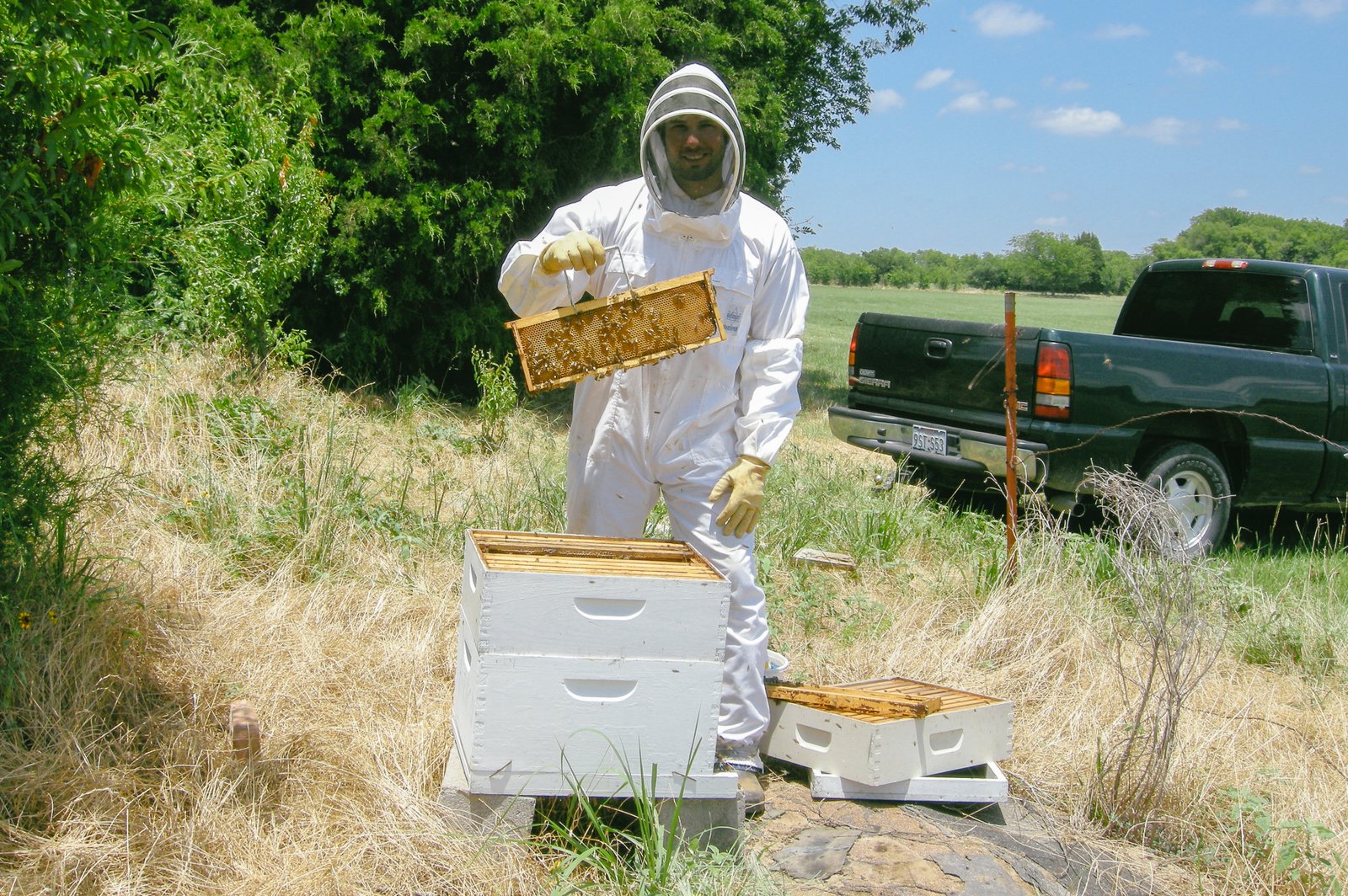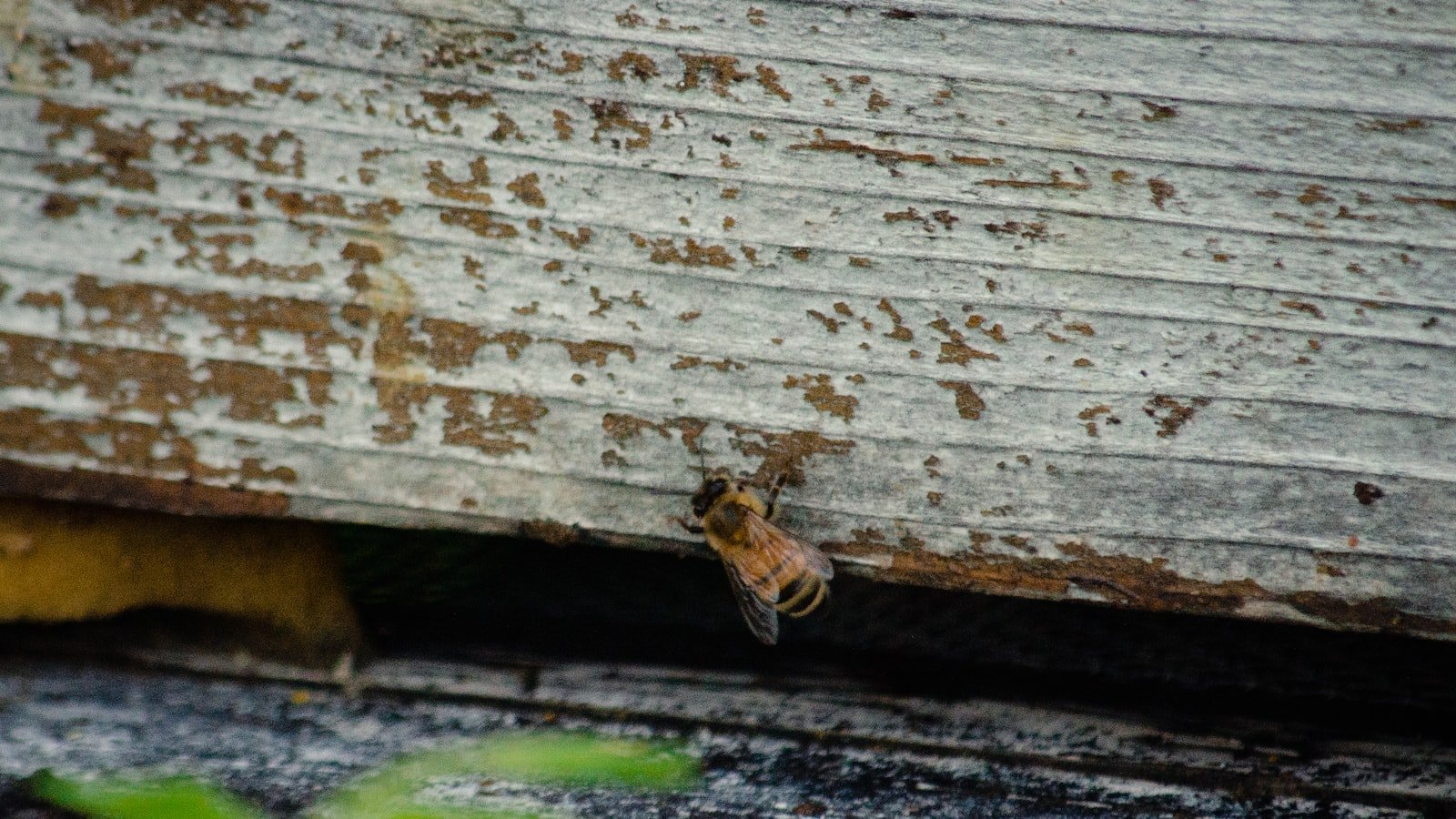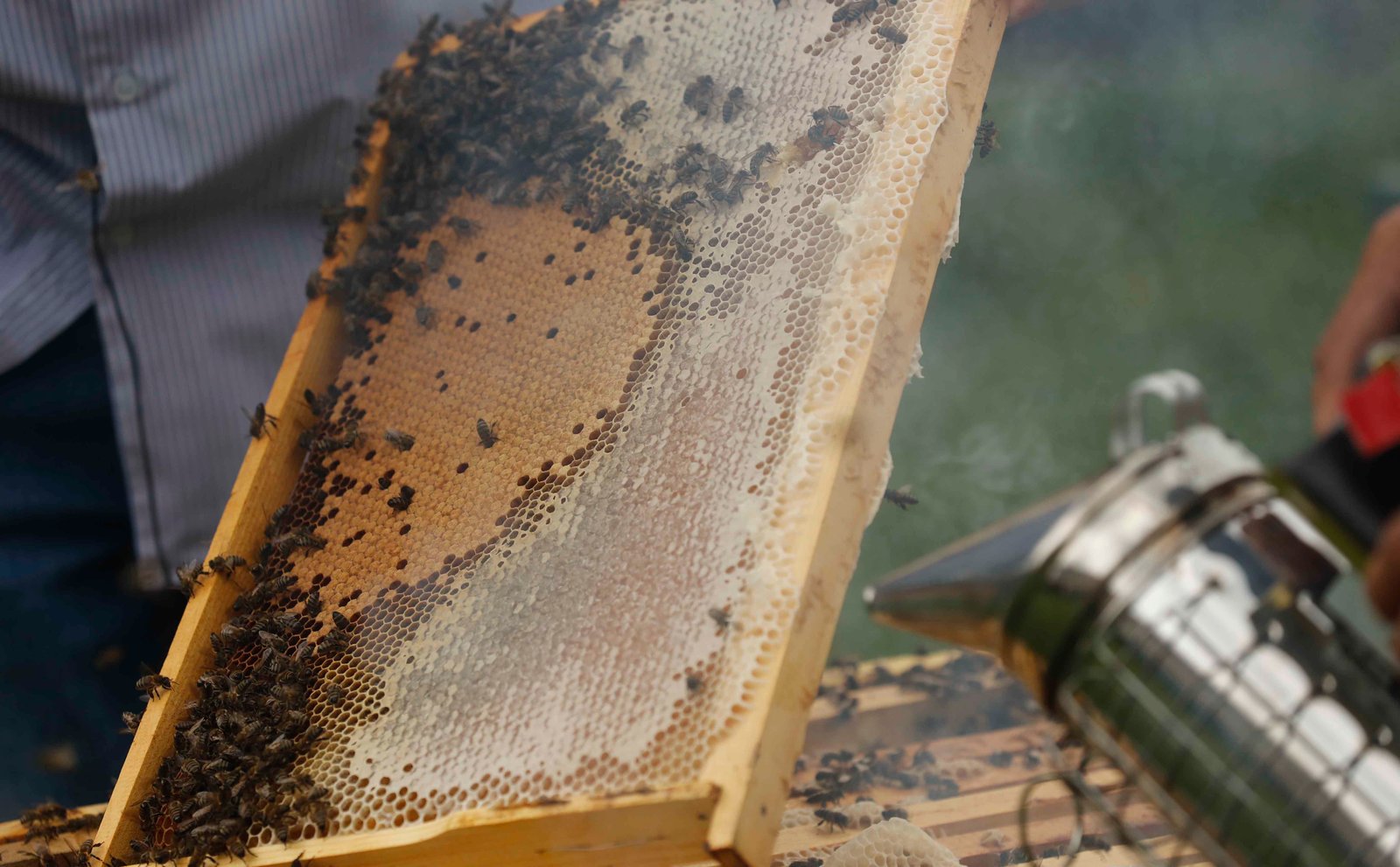Among the mesmerizing world of beekeeping, there is an age-old adage that states, “If you want to reap the golden honey, you must first tame the smoke.” Indeed, smoke has been a trusted ally of seasoned beekeepers for centuries, calming the buzzing swarms and granting access to the sweet nectar within. While commercial smokers are readily available, crafting your own smoker adds a touch of personalization and ingenuity to an already extraordinary craft. So, if you find yourself with an insatiable desire to explore the realms of DIY beekeeping equipment, follow along as we dive into the enchanting realm of making your very own smoker for beekeeping.
Table of Contents
- Building a Smoker: Key Considerations for Beekeepers
- Choosing the Right Materials for Your DIY Beekeeping Smoker
- Step-by-Step Guide: Crafting Your Own Bee Smoker
- Enhancing Efficiency: Tips and Tricks for Optimal Smoker Performance
- Maintenance and Safety: Ensuring Longevity and a Pleasant Beekeeping Experience
- Q&A
- Concluding Remarks

Building a Smoker: Key Considerations for Beekeepers
When it comes to beekeeping, having the right equipment is essential to ensure that you can efficiently and safely handle your bees. One key consideration for beekeepers is the construction of a smoker. A smoker is a device used to calm bees during hive inspections by emitting smoke that masks their alarm pheromones.
There are several important factors to consider when building a smoker:
- Size: The size of the smoker is crucial as it determines how long the smoker will be able to generate smoke. A larger smoker will allow for longer periods of smoking, giving beekeepers more time to work without disturbing the bees.
- Materials: Choosing the right materials is essential for the smoker’s durability and efficiency. Stainless steel is a popular choice as it is rust-resistant and easy to clean, ensuring a long-lasting smoker.
- Airflow: Proper airflow is crucial for an effective smoker. The smoker should have ventilation holes or a bellows system that allows for easy control of smoke output. This ensures that the smoke reaches the bees without suffocating them.
- Fuel: Selecting the right type of fuel for your smoker is important. Beekeepers commonly use materials such as smoker pellets, wood chips, or dried herbs. These fuels should produce a cool, slow-burning smoke that calms the bees without causing harm.
By carefully considering these key factors, beekeepers can construct a well-designed smoker that enhances their beekeeping experience. Remember, a properly built and maintained smoker will play a vital role in keeping your bees calm and allowing you to work with them efficiently.

Choosing the Right Materials for Your DIY Beekeeping Smoker
When it comes to beekeeping, having a smoker is essential. It helps calm the bees, making it easier for you to inspect and tend to your hives. If you’re considering building your own DIY beekeeping smoker, selecting the right materials is crucial for its effectiveness and durability. Here are a few key factors to consider:
- Chamber: The chamber of your smoker should be made of heat-resistant materials such as stainless steel or galvanized metal. These materials can withstand high temperatures without warping or melting, ensuring your smoker will last longer.
- Bellows: The bellows, which produce the smoke, can be made from a variety of materials. Leather is a popular choice for its durability and flexibility. However, synthetic materials like neoprene can also be used, as they provide good heat resistance.
- Fuel Container: Your smoker’s fuel container should be made of a non-flammable material such as stainless steel or aluminum. It’s important to choose a container that is easy to refill and has good ventilation to maintain a steady burn.
- Handles: Consider using heat-resistant materials like wooden or rubber-coated handles for easier and safer handling of your smoker.
Remember, the right materials not only ensure the longevity of your DIY beekeeping smoker but also play a crucial role in its effectiveness during hive inspections. Take your time to choose the materials wisely, and enjoy the benefits of a well-built smoker in your beekeeping journey!

Step-by-Step Guide: Crafting Your Own Bee Smoker
Looking to expand your beekeeping skills? Crafting your own bee smoker is not only a cost-effective solution, but it also allows you to develop a deeper understanding of this essential tool. By following this step-by-step guide, you’ll have your homemade bee smoker ready in no time!
Materials Needed:
- 1 large metal tin with a removable lid
- Drill and drill bits
- Fireproof fabric
- Wood chips or dried pine needles
- Leather gloves
Step 1: Preparing the Tin
Begin by drilling several small holes on the bottom and sides of the metal tin, allowing for proper ventilation. Make sure the holes are evenly spaced to ensure the smoke is evenly distributed.
Step 2: Adding the Fireproof Fabric
Line the inside of the tin with fireproof fabric, securing it in place with a strong adhesive. This fabric will insulate the tin and prevent it from overheating during use. Ensure the fabric is tightly fitted to avoid any loose ends that could catch fire.
Step 3: Filling the Bee Smoker
Gently pack the tin with wood chips or dried pine needles, leaving enough space for airflow. These materials will generate the smoke needed to calm the bees during inspections. Remember, the type of wood you choose can affect the scent and intensity of the smoke.
Step 4: Using Your Homemade Bee Smoker
Put on your leather gloves for protection and light the wood chips or pine needles inside the tin. Once the smoke begins to billow, carefully close the lid to trap the smoke inside. Use the bee smoker as needed during hive inspections, puffing small amounts of smoke around the bees to keep them calm.

Enhancing Efficiency: Tips and Tricks for Optimal Smoker Performance
Mastering the art of smoker cooking is an exhilarating journey, but achieving optimal performance requires a few handy tricks up your sleeve. Here are some game-changing tips to supercharge your smoker and enhance its efficiency, guaranteeing mouthwatering results every time:
- Preheat to Perfection: Prior to grilling, ensure your smoker is preheated to the desired temperature. This step is crucial for achieving optimal efficiency, as it allows for consistent and controlled cooking. Take the time to monitor and adjust the temperature to guarantee a flawless cooking environment.
- Fuel Management: Proper fuel management is key to a well-performing smoker. Consider using quality hardwood charcoals or wood chunks suited to the type of meat you’re cooking. Soaking wood chips beforehand can also add a flavorful infusion. Remember, using too much fuel can create unnecessary smoke, while too little may cause temperature fluctuations—finding the perfect balance is crucial.
- Seal the Deal: Don’t let valuable heat escape! Ensure your smoker’s door and vents have a tight seal. This prevents heat loss and enables better temperature control. You can even use heat-resistant gaskets or silicone sealants to reinforce the seal and maximize efficiency.
By following these expert tips, you can unlock the true potential of your smoker and take your BBQ game to the next level. Enhance efficiency, savor the flavors, and prepare for culinary triumphs that will leave your guests craving more.
Maintenance and Safety: Ensuring Longevity and a Pleasant Beekeeping Experience
Maintenance:
- Regular inspection of beehives is essential to ensure the health and well-being of the bees. This includes checking for signs of disease, pests, or any abnormalities in the hive structure.
- It is crucial to regularly clean and sanitize the equipment used in beekeeping to prevent the spread of diseases and maintain a hygienic environment for the bees.
- Regular monitoring of honey production levels helps in determining if the bees have enough food and if any supplemental feeding is necessary to support their nutritional needs.
- Providing a clean and accessible water source near the beehives helps keep the bees hydrated, especially during hot and dry seasons.
Safety:
- Wearing the appropriate protective gear, such as a beekeeper suit, gloves, and a veil, is crucial to prevent bee stings or any allergic reactions.
- Keeping calm and moving slowly around the bees is important to avoid agitating them. Quick movements and loud noises can trigger defensive behavior.
- Using smoke during hive inspections helps to calm the bees and make them less aggressive, making the beekeeping experience safer for both the beekeeper and the bees.
- Ensuring the beehives are placed in a secure and stable location prevents them from tipping over, causing harm to the bees or beekeeper.
In conclusion, the maintenance and safety aspects of beekeeping play a crucial role in ensuring the longevity of the bee colonies and a pleasant beekeeping experience. Regular maintenance practices and thorough inspections help keep the bees healthy and productive, while prioritizing safety measures reduces the risk of bee stings and other potential hazards. By properly maintaining the beehives and adhering to safety protocols, beekeepers can enjoy a rewarding and sustainable journey in beekeeping.
Q&A
How can I make my own smoker for beekeeping?
You can make your own smoker for beekeeping by using a metal canister, such as a coffee can, and attaching a small bellows to it. Fill the canister with smoker fuel, such as dried leaves or pine needles, and ignite it. The bellows can then be used to blow air into the canister, producing a steady stream of smoke for calming the bees.
What materials do I need to make a homemade smoker?
To make a homemade smoker, you will need a metal canister, preferably with a removable lid, a small bellows or air pump, and a heat-resistant material to use as fuel, such as dried leaves or pine needles. Additionally, you will need some basic tools like a drill and screws for attaching the bellows to the canister.
Are there any safety precautions I should take when making a homemade smoker?
Yes, safety is paramount when making a homemade smoker. Make sure to always work in a well-ventilated area and take precautions to avoid inhaling smoke. Use heat-resistant gloves and be cautious of any hot surfaces. Keep a fire extinguisher nearby and never leave a lit smoker unattended.
Can I use any type of canister for my homemade smoker?
While metal canisters like coffee cans or paint cans are commonly used for homemade smokers, it’s essential to ensure that the canister is made of a material that can withstand heat. Avoid using plastic or flammable materials that could pose a safety risk when exposed to the hot smoker fuel.
What types of fuel can I use in my homemade smoker?
You can use a variety of materials as fuel for your homemade smoker. Dried leaves, specifically from non-toxic plants, are commonly used. Pine needles, wood chips, or even sawdust can also be suitable options. Avoid using materials that produce noxious fumes or residues that could harm the bees.
How do I use the smoker to calm the bees?
To use the smoker, start by lighting the fuel inside the canister until it produces a steady stream of smoke. Gently puff the smoke at the entrance of the beehive and around the bees to calm them down. The smoke disrupts the bees’ communication, making them less aggressive and more focused on consuming honey, which helps control their behavior during inspections or honey collection.
Are there any other benefits of using a homemade smoker for beekeeping?
Yes, apart from calming the bees, the smoke from a homemade smoker can also mask the bees’ alarm pheromones, making them less likely to react defensively. Additionally, the smoke can prompt the bees to gorge on honey momentarily, which makes them gentler and less likely to sting during inspections or hive manipulations.
Concluding Remarks
As we conclude this adventurous journey of crafting your very own smoker for beekeeping, it’s time to reflect on the artistry and resourcefulness that went into this project. From repurposing everyday household items to constructing a fireproof behemoth capable of taming thousands of buzzing beauties, you’ve embarked on a journey that connects you deeply with nature’s pollinators.
While this guide provided you with the steps to create a smoker that perfectly suits your beekeeping needs, it’s vital to remember the profound bond we share with these extraordinary creatures. Beekeeping isn’t just about harvesting honey or conquering the perfect hive inspection; it’s about nurturing an age-old relationship with these remarkable insects.
Now armed with your homemade smoker, you possess not only the means to calm your buzzing friends but also a tangible reminder of your commitment to their well-being. As you envelop yourself in fragrant wisps of smoke, take a moment to reflect on the magical harmony between humans and bees, and the profound impact we have on each other’s existence.
But remember, dear beekeeper, your journey does not end here. It is merely a spark kindling a lifelong passion for apiculture. Continue to learn, explore, and marvel at the complexities of the hive. Seek wisdom from fellow keepers, delve into books that whisper ancient beekeeping secrets, and let this humble smoker be a constant reminder of the wonders yet to be discovered.
In the realm of beekeeping, every smoky puff is an invitation into a world of symbiotic marvels. It is an exchange of trust, stewardship, and devotion. As you embark upon your beekeeping endeavors armed with your creation, remember to tend not only to the honey-laden frames but also to your own growth as a guardian of these industrious creatures.
With your homemade smoker and an open heart, you are prepared to embark on a journey that transcends boundaries, connects cultures, and, above all, fosters an unwavering bond with the tiny architects of our world. So go forth, intuitive beekeeper, and let the captivating hum of your apiary resonate through generations, nurturing the legacy of harmony between humans and bees.
As an affiliate, my content may feature links to products I personally use and recommend. By taking action, like subscribing or making a purchase, you’ll be supporting my work and fueling my taco cravings at the same time. Win-win, right?
Want to read more? Check out our Affiliate Disclosure page.